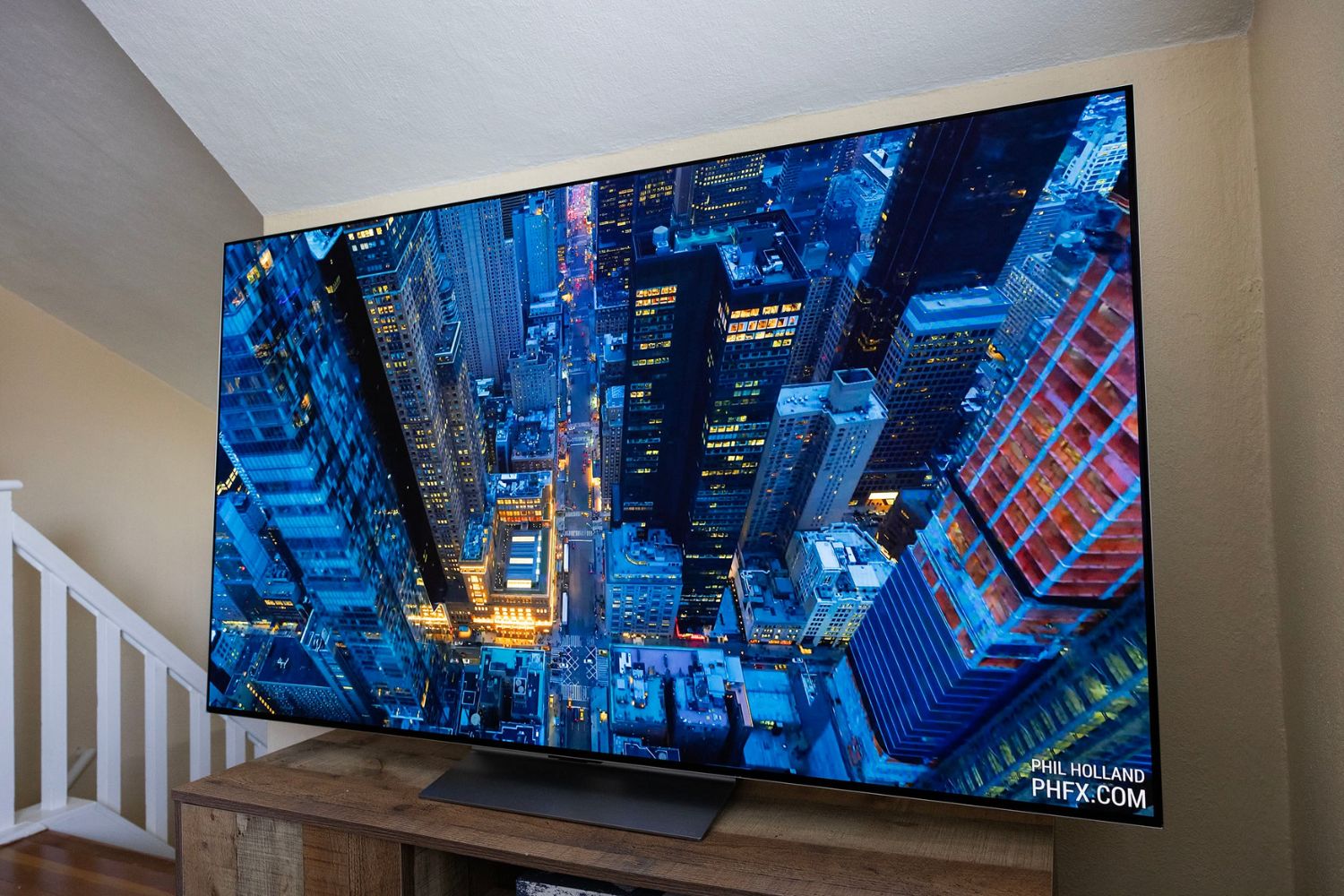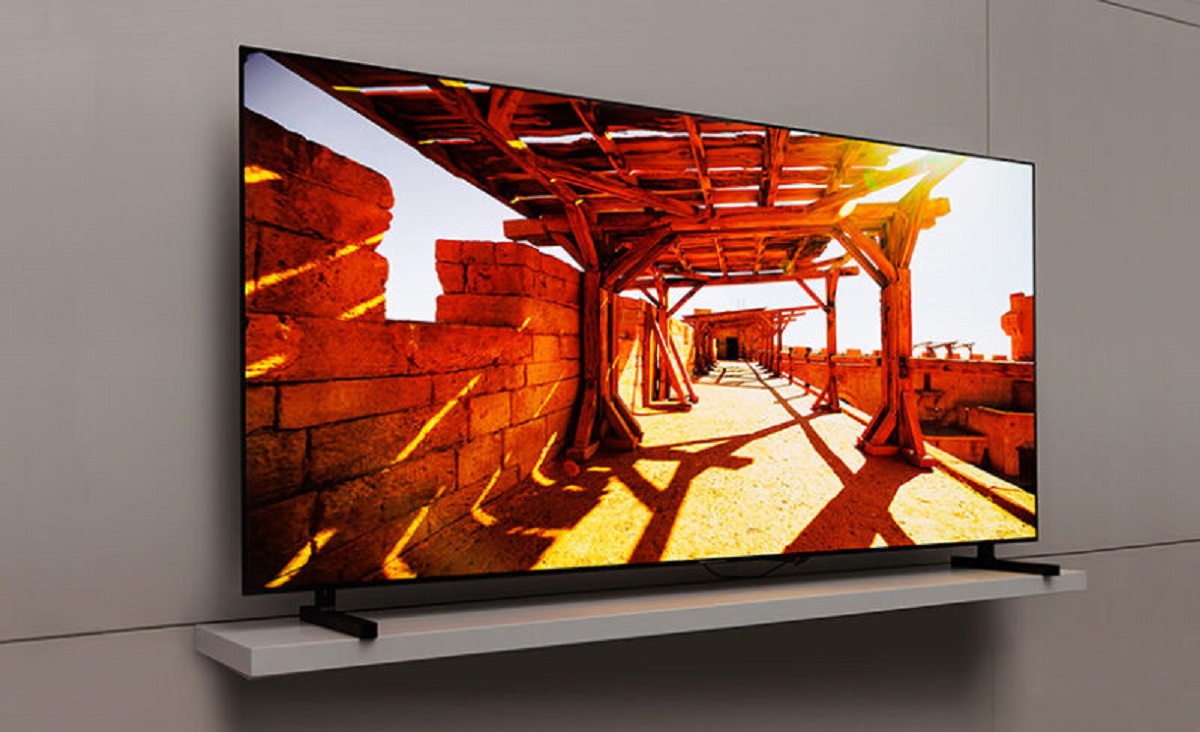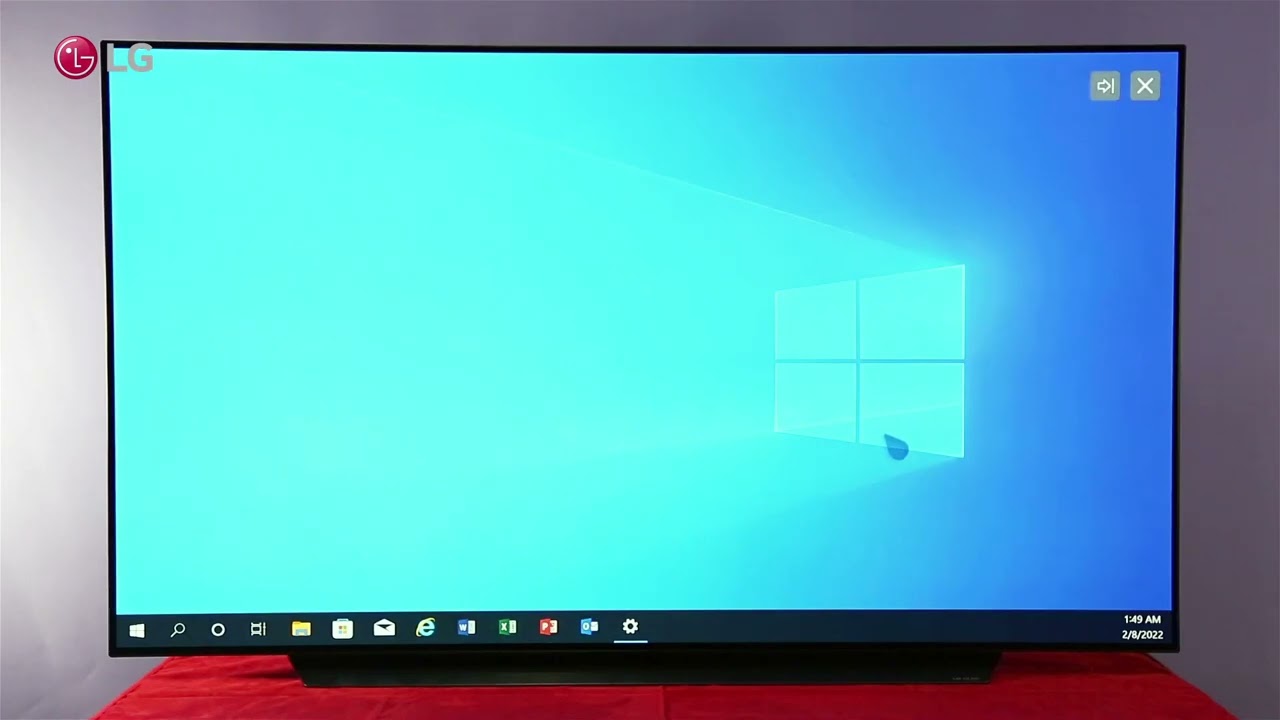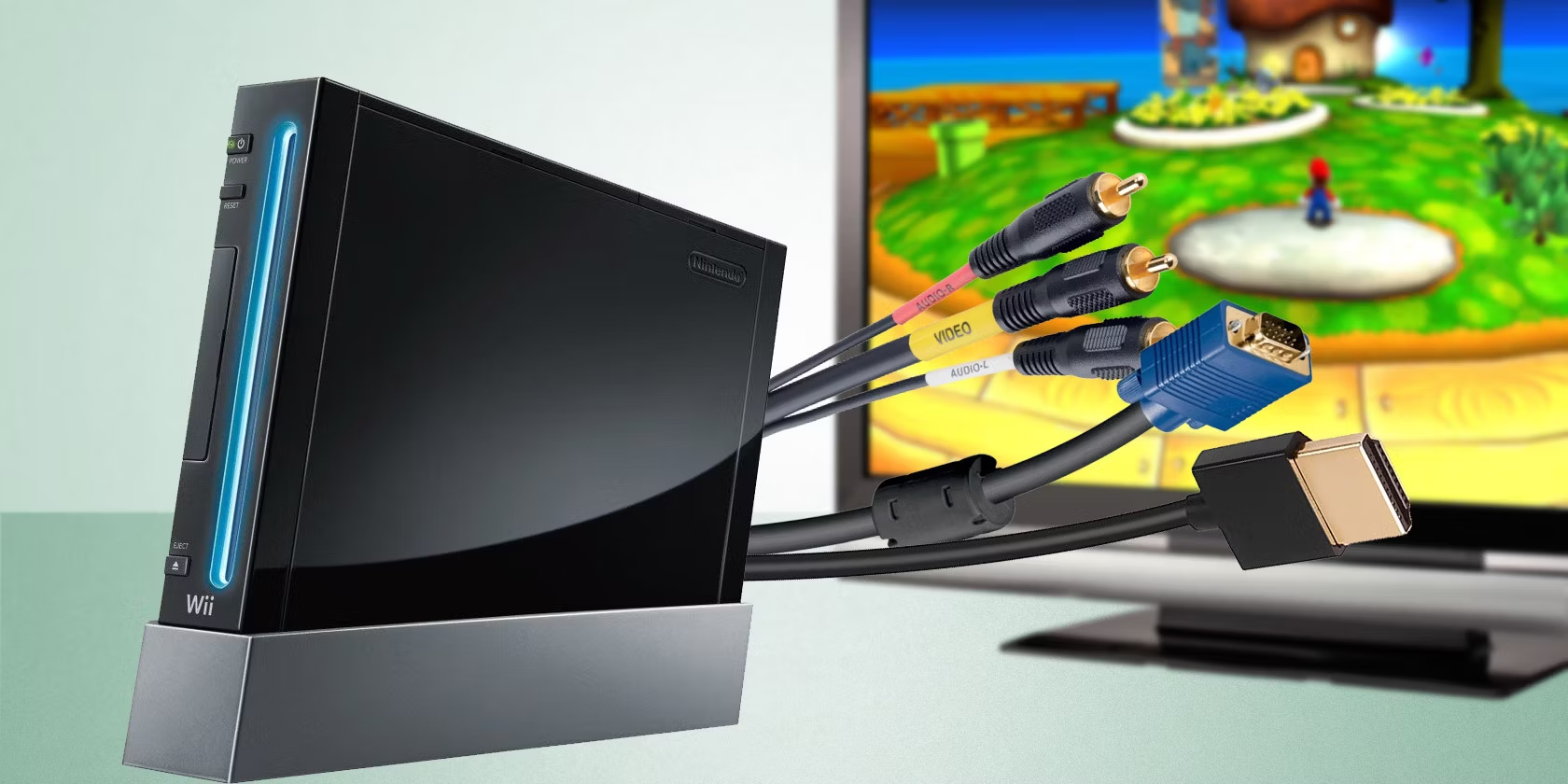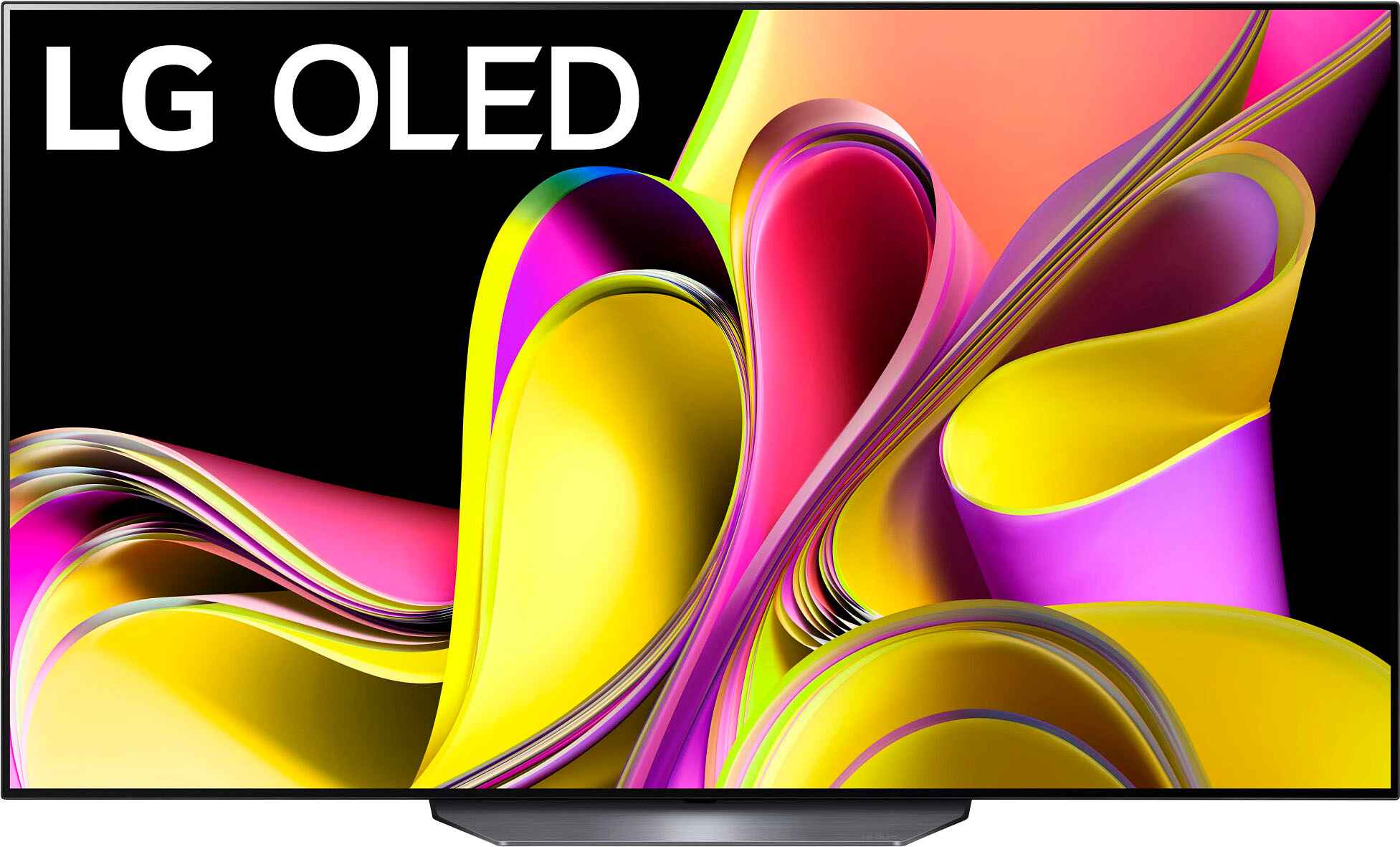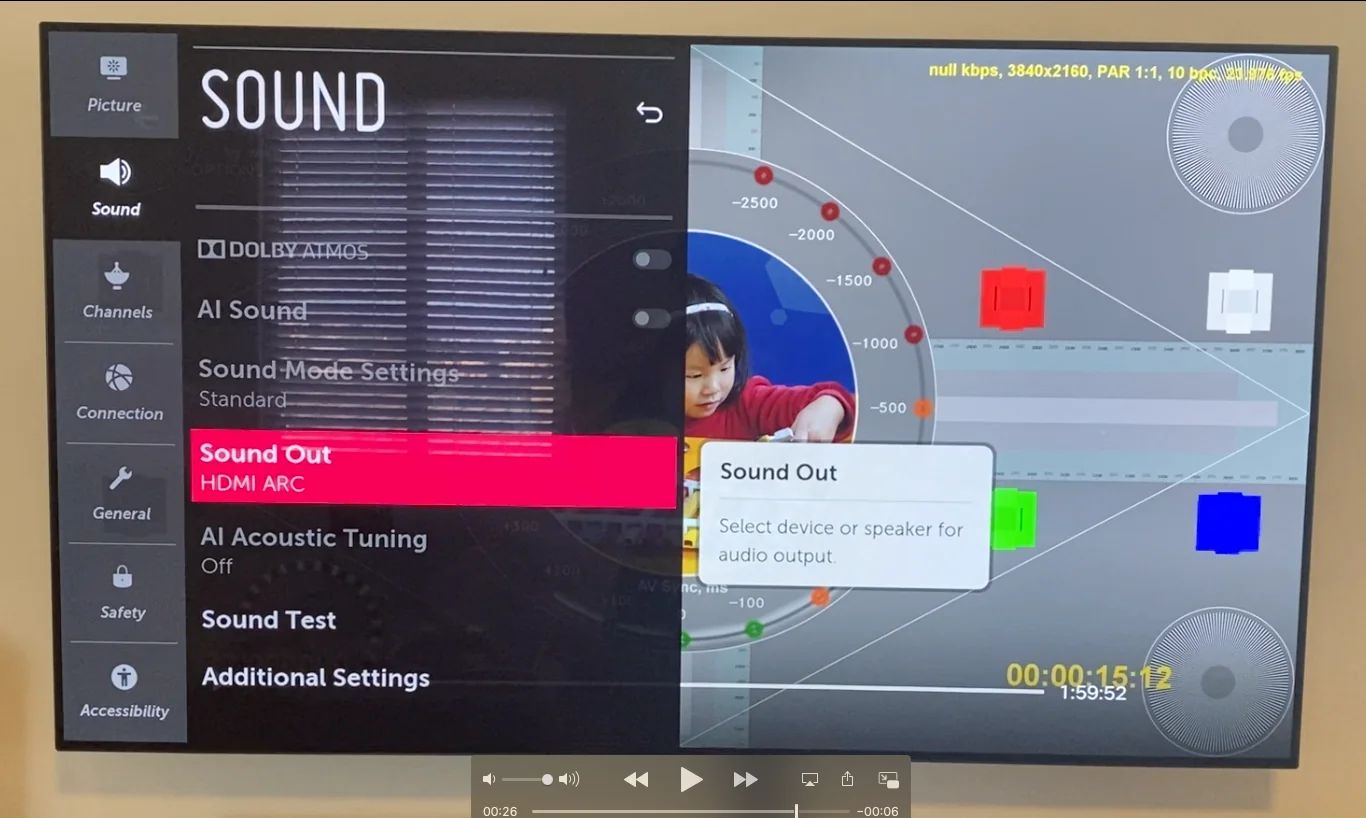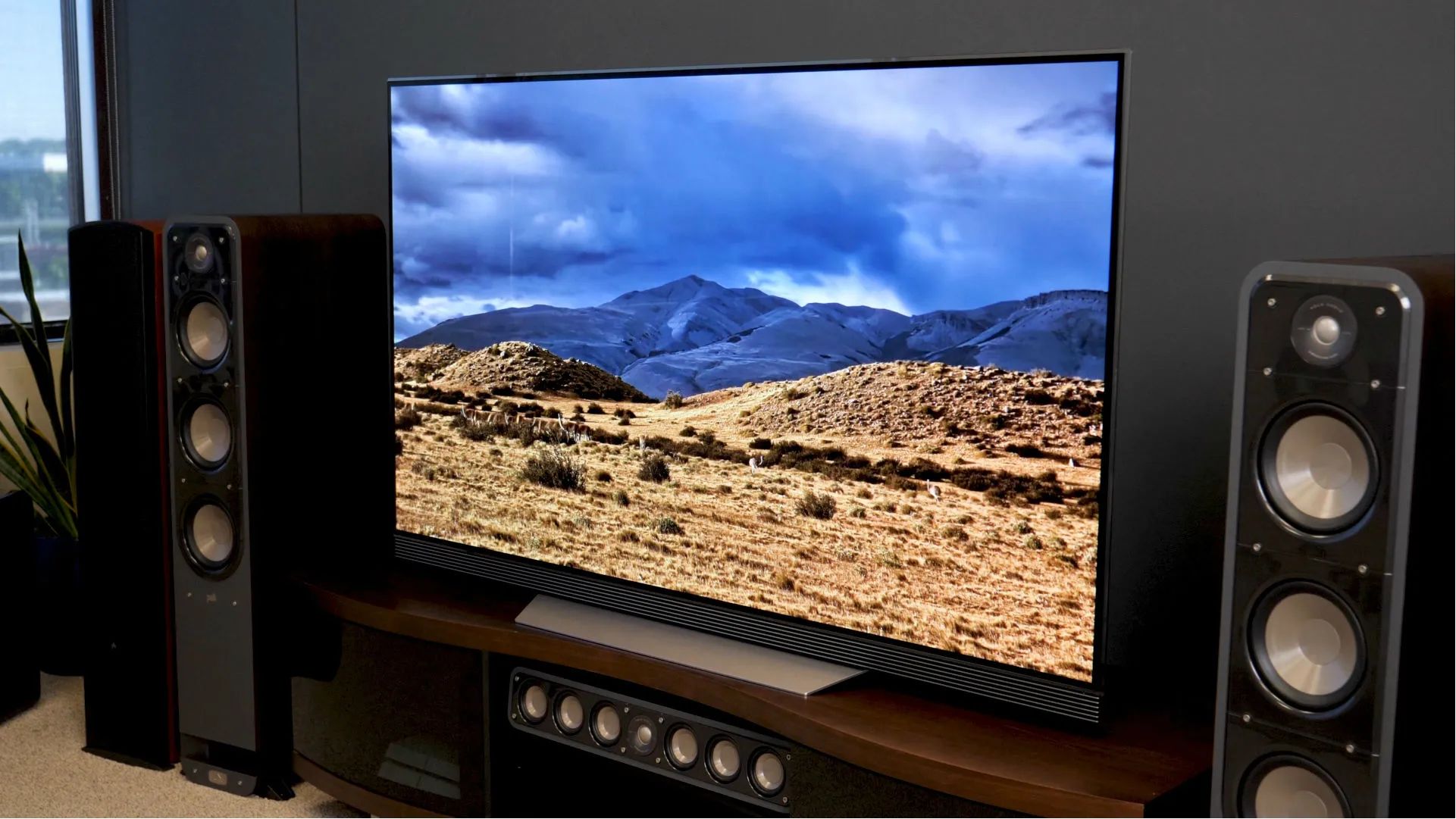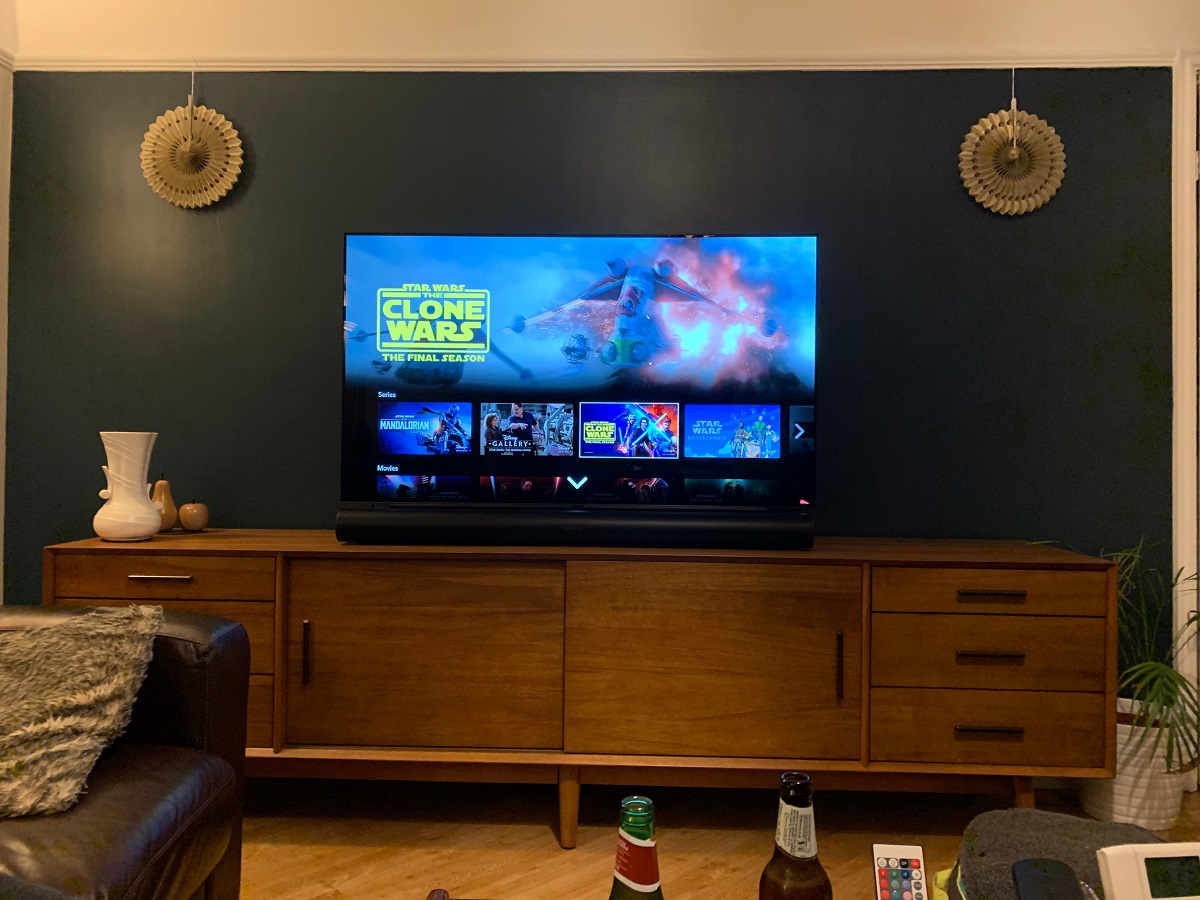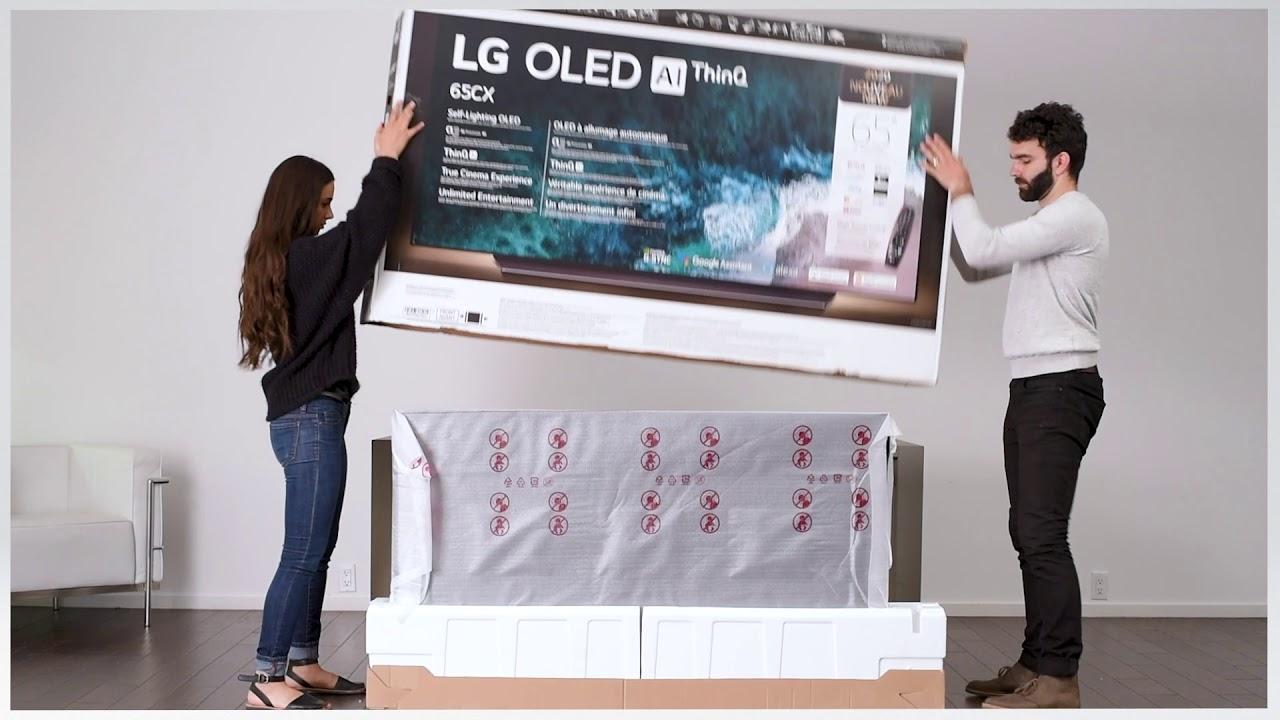Introduction
OLED (Organic Light-Emitting Diode) technology has revolutionized the television industry, providing viewers with stunning picture quality, vibrant colors, and impeccable contrast. To fully enjoy the benefits of an OLED TV, it is crucial to use the right cable for optimal connectivity.
When it comes to connecting your devices to an OLED TV, there are several cable options available, each with its own capabilities and specifications. The most commonly used cables for connecting devices to an OLED TV include HDMI, DisplayPort, and USB-C.
In this article, we will explore the different types of cables used for OLED TVs and provide insights into their features, compatibility, and performance. Whether you’re setting up a home theater system or simply connecting your gaming console, understanding the right cable options will ensure that you get the most out of your OLED TV viewing experience.
So, let’s dive into the world of cables and explore the options available for connecting devices to your OLED TV.
HDMI Cables
HDMI (High-Definition Multimedia Interface) cables are the most popular and commonly used cables for connecting devices to an OLED TV. They offer a seamless digital connection, transmitting both high-definition video and audio signals.
There are different versions of HDMI cables, each with varying capabilities and features. It’s important to understand the differences between these versions to ensure compatibility with your devices and maximize the performance of your OLED TV.
HDMI versions 1.4 and older: These cables support Full HD (1080p) resolution and are suitable for older devices or those that don’t require higher resolutions. They are still widely used and offer reliable transmission of audio and video signals.
HDMI versions 2.0 and 2.1: These newer versions provide support for higher resolutions, including 4K Ultra HD and even 8K. They also incorporate additional features like HDR (High Dynamic Range) and increased bandwidth for smoother, more immersive viewing experiences. HDMI 2.1 cables are recommended for those who want to take full advantage of the latest technologies and enjoy the best picture quality on their OLED TV.
When choosing an HDMI cable for your OLED TV, it’s essential to consider the resolution and features supported by your TV and the devices you will be connecting. For example, if you have a 4K OLED TV and a Blu-ray player that supports 4K resolution, it’s recommended to use an HDMI 2.0 or 2.1 cable to ensure you can enjoy the full capabilities of your devices.
Additionally, HDMI cables come in different lengths, so consider the distance between your devices and your OLED TV when selecting a cable. It’s best to choose a length that allows for flexibility in positioning your devices without compromising signal quality.
In summary, HDMI cables are the go-to choice for connecting devices to an OLED TV. Understanding the different versions and selecting the appropriate cable for your specific needs will ensure a high-quality and immersive viewing experience.
HDMI Versions 1.4 and Older
HDMI versions 1.4 and older are still widely used and offer reliable connectivity for devices that do not require higher resolutions. These cables support Full HD (1080p) resolution, making them suitable for older devices such as DVD players, gaming consoles, and older set-top boxes.
One of the key features of HDMI 1.4 is ARC (Audio Return Channel), which allows for the transmission of audio from the TV back to the connected device, such as a soundbar or AV receiver, eliminating the need for a separate audio cable.
Another important feature of HDMI 1.4 is its support for 3D content. If you have a 3D-compatible OLED TV and want to enjoy 3D movies or games, HDMI 1.4 is capable of transmitting the necessary signals to create a three-dimensional viewing experience.
While HDMI 1.4 cables do not support the higher resolutions and advanced features of newer versions, they are still suitable for many home entertainment setups. They offer a reliable and cost-effective solution, especially for devices that do not demand 4K or 8K resolution.
It’s important to note that HDMI cables are backward compatible, which means you can use an HDMI 1.4 cable with a device that supports a higher version, such as HDMI 2.0 or 2.1. However, the cable’s capabilities will be limited to the specifications of the older version, and you may not be able to take full advantage of the advanced features of your devices.
If you have an older OLED TV or devices that do not support higher resolutions, HDMI 1.4 cables are a reliable and affordable choice for connecting your devices and enjoying high-definition content. However, if you plan to upgrade your devices in the future or want to experience the latest technologies, it’s advisable to consider HDMI versions 2.0 or 2.1 for optimal performance and compatibility.
HDMI Versions 2.0 and 2.1
HDMI versions 2.0 and 2.1 are the latest iterations of the HDMI standard and bring significant advancements in terms of resolution support and enhanced features. These versions are designed to meet the demands of high-resolution content and provide a more immersive viewing experience on your OLED TV.
HDMI 2.0 is capable of supporting 4K Ultra HD resolution at 60 frames per second (fps) and offers increased bandwidth for high-quality audio and video transmission. This means you can enjoy stunning visuals with smooth motion and clear details on your OLED TV. Furthermore, HDMI 2.0 supports a wider color gamut and deeper color depths, providing more vibrant and lifelike images.
HDMI 2.1 takes things a step further, offering support for even higher resolutions, including 8K Ultra HD at 60 fps and 4K at 120 fps. This ensures an incredibly sharp and detailed picture, making it ideal for those who want to future-proof their setup and enjoy the highest resolutions available.
In addition to higher resolutions, HDMI 2.1 introduces other exciting features. One of the standout features is Variable Refresh Rate (VRR), which synchronizes the display’s refresh rate with the content’s frame rate, reducing screen tearing and stuttering during fast-paced gaming or action scenes. This results in a smoother and more responsive gaming experience.
Another notable feature of HDMI 2.1 is Quick Frame Transport (QFT), which minimizes latency and ensures faster transmission of frames, reducing lag and enhancing the responsiveness of your gaming system.
HDMI 2.1 also supports Enhanced Audio Return Channel (eARC), allowing for higher-quality audio transmission between your TV and connected devices, such as soundbars or AV receivers. This ensures that you can enjoy immersive and high-fidelity sound to complement the stunning visuals on your OLED TV.
With the ever-evolving landscape of home entertainment, HDMI versions 2.0 and 2.1 provide the necessary capabilities to take full advantage of the latest technologies and content. If you own a high-resolution OLED TV or plan to upgrade to one in the future, opting for HDMI 2.0 or 2.1 cables will ensure that you can enjoy the best picture quality and features available.
DisplayPort Cables
DisplayPort cables are another popular option for connecting devices to an OLED TV. Like HDMI cables, DisplayPort cables transmit both high-definition video and audio signals. However, DisplayPort cables offer some unique advantages that make them a preferred choice for certain setups.
One key advantage of DisplayPort cables is their ability to support higher resolutions and refresh rates. DisplayPort 1.4, the most common version currently available, can handle resolutions up to 8K at 60Hz or 4K at 240Hz, delivering incredibly sharp and smooth visuals on your OLED TV.
DisplayPort cables also support advanced features such as HDR (High Dynamic Range), which enhances the contrast and color accuracy of content, resulting in a more vibrant and realistic visual experience. Additionally, DisplayPort cables support multi-stream transport (MST) technology, allowing you to daisy chain multiple monitors or connect multiple devices to a single DisplayPort output.
When it comes to connecting your devices, it’s important to ensure that both your OLED TV and the device you are connecting support DisplayPort. Many computers, laptops, and graphics cards come equipped with DisplayPort outputs, making it a convenient choice for connecting your PC to an OLED TV.
However, if your device does not have a DisplayPort output, you can still connect it to your OLED TV using an adapter or a DisplayPort to HDMI cable, taking advantage of the flexibility of DisplayPort cables. Keep in mind that the specific capabilities, including resolution support and features, may vary depending on the version of DisplayPort and the device you are connecting.
Ultimately, DisplayPort cables offer a viable alternative to HDMI for connecting devices to an OLED TV, especially for high-resolution gaming, content creation, or multi-monitor setups. If you have devices that support DisplayPort and want to take advantage of its unique features and high-performance capabilities, it’s worth considering DisplayPort cables for your OLED TV setup.
USB-C Cables
USB-C (or USB Type-C) cables have gained significant popularity in recent years due to their versatility and compatibility with various devices, including OLED TVs. While USB-C is primarily known for its ability to charge and transfer data between devices, it can also be used for video and audio transmission.
USB-C cables with DisplayPort Alternate Mode (DP Alt Mode) can deliver video and audio signals directly to an OLED TV, eliminating the need for dedicated video cables. This makes USB-C an attractive option, especially for laptops, tablets, and smartphones that feature USB-C ports.
One of the key advantages of USB-C cables is their ability to support high-definition video up to 4K resolution. However, it’s important to ensure that both your device and your OLED TV support USB-C with DP Alt Mode for video output. Additionally, USB-C cables need to be connected to a USB-C port that supports video output on your device.
USB-C also supports other features like Power Delivery (PD), which allows for fast charging and power transfer capabilities. This means that you can connect your device to your OLED TV via USB-C and simultaneously charge your device or power it from the TV, reducing the need for multiple cables and power adapters.
While USB-C cables provide convenience and versatility, it’s important to note that not all USB-C cables are created equal. Ensure that the USB-C cable you choose meets the necessary specifications for video output, power delivery, and data transfer. It’s recommended to use high-quality cables from reputable manufacturers to ensure optimal performance and compatibility.
USB-C cables offer a streamlined solution for connecting devices to an OLED TV, especially for devices with USB-C ports. Whether you want to mirror your laptop screen, stream content from your smartphone, or charge your device, USB-C cables provide a convenient and versatile option for integrating your devices with your OLED TV.
Conclusion
Choosing the right cable for your OLED TV is crucial to ensure optimal connectivity and maximize your viewing experience. HDMI cables are the most commonly used and offer seamless digital transmission of high-definition video and audio signals. HDMI versions 2.0 and 2.1 provide support for higher resolutions, increased bandwidth, and advanced features like HDR and VRR, making them ideal for those who want to enjoy the latest technologies.
DisplayPort cables offer higher resolution support, faster refresh rates, and additional features like MST, making them a preferred choice for gamers, content creators, and those seeking multi-monitor setups. USB-C cables provide versatility and compatibility, allowing for video, audio, and power transfer between devices and an OLED TV.
When selecting a cable, consider the capabilities and specifications of your OLED TV and the devices you plan to connect. It’s also important to ensure compatibility with the ports available on your devices. Opting for high-quality cables from reputable manufacturers will ensure reliable performance and longevity.
Ultimately, understanding the different types of cables available and their respective features will enable you to make informed decisions and set up your OLED TV system to deliver the best possible picture and sound quality.
So, explore your options, choose the right cable, and immerse yourself in the mesmerizing world of OLED technology with your perfectly connected OLED TV setup.







